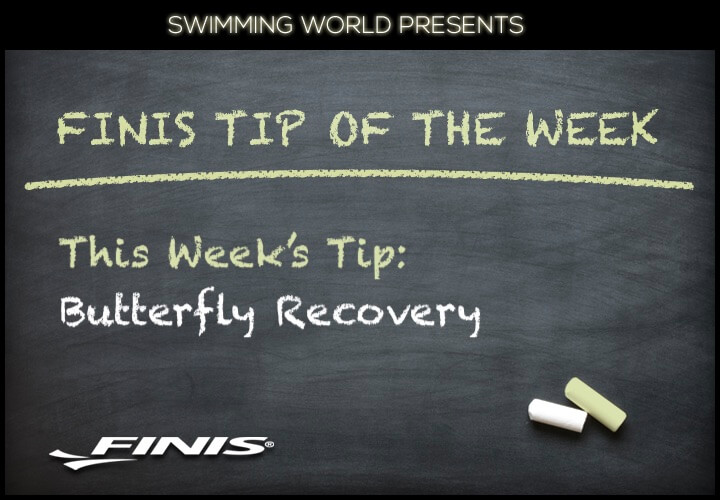FINIS Tip Of The Week: Butterfly Recovery

The Tip of the Week is sponsored by FINIS. Visit FINISswim.com for more information about our sponsor.
Welcome to the “FINIS Tip of the Week.” Swimming World will be bringing you a topic that we’ll explore with drills and concepts for you to implement with your team on a regular basis. While certain weeks may be more appropriate for specific levels of swimming (club, high school, college, or masters), each tip is meant to be flexible for your needs and inclusive for all levels of swimming.
The tip for this week takes a closer look at the recovery in butterfly. Commonly seen as the toughest stroke, that perception usually comes from how difficult butterfly can be when your technique falls apart. Almost every swimmer has had an experience where they feel like they can’t bring their arms out of the water for another stroke, so avoid that by taking a look at the tips below to help keep your butterfly smooth and efficient.
Relax!
It is important to remember that the recovery in butterfly (and really any stroke for that matter) is not actively moving you forward. That propulsion comes from the work you do under the water, so when you are recovering in your stroke you need to think about staying relaxed.
Rather than forcing your arms forward as fast as you can, think about driving them forward with the rest of your body at the end of each stroke while also staying low across the water. Use your second kick to help time the swing around of your arms and set up your next stroke so that your pull and kicks are working together and not disjointed.

Photo Courtesy: Peter Bick
Throw Arms Forward, Palms Back
Along with that, it is also important to examine what our hands are doing when they are out of the water on our recovery. Ultimately, you want your palms facing directly behind you and the front of your hand facing forward as you swing your arms around with each stroke.
This is a natural position for your arms that makes sure you have a strong finish at the end of each pull (ideally want our palsm pressing the water behind us during our pull) while also ensuring that your hands can easily rotate internally to set up a strong catch on your next pull.

Photo Courtesy: Peter H. Bick
Watch The Splash…
Similar to the idea of being relaxed bringing your arms around for the recovery, you also want to make sure your hands are entering the water with as little resistance as possible. Butterfly is about moving forward, not up and down, so avoid slapping the water or trying to press down immediately upon entering the water.
Rather, think about extending the fingertips as far as possible in front at the end of each stroke cycle and entering with almost no splash. This will give you a better feel for the water at the start of each pull that will go a long way to making each stroke more efficient. Happy swimming!
All swimming and dryland training and instruction should be performed under the supervision of a qualified coach or instructor, and in circumstances that ensure the safety of participants.




